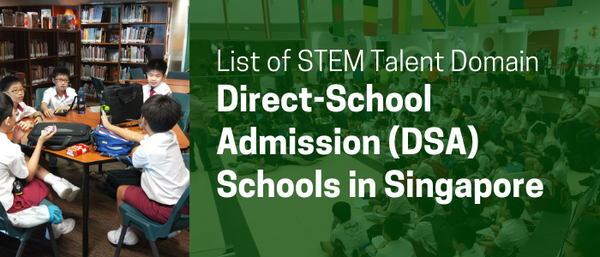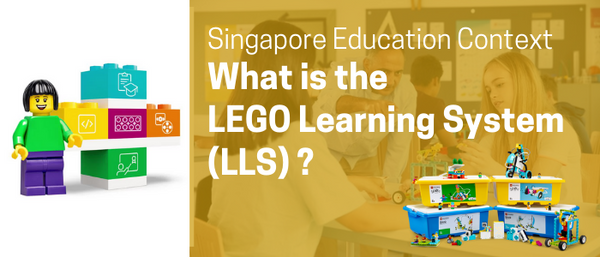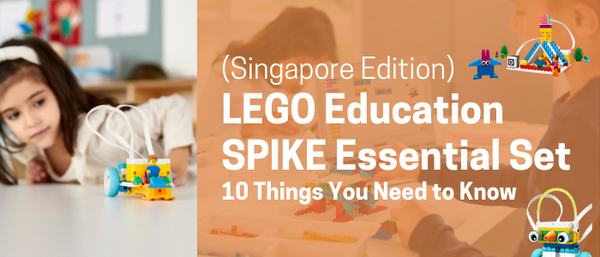What is STEM and STEAM education in Singapore?
What is STEAM Education in Singapore today?
Under STEAM (Science, technology, engineering, and mathematics) education, students are encouraged to explore, experiment, and collaborate in solving real-world problems. The curriculum often integrates STEAM concepts across various subjects, providing students with opportunities to apply their knowledge in practical contexts.
STEAM education in Singapore integrates the disciplines of Science, Technology, Engineering, Arts, and Mathematics into a cohesive learning approach. STEAM education is thoughtfully integrated into the curriculum to foster holistic learning and prepare students for the future.
In Singapore, STEAM education is not only about knowledge but also about encouraging critical thinking, creativity, innovation, and problem-solving skills.
Singapore as a country recognizes the need to equip its students with a strong foundation in these areas to thrive in an increasingly technology-driven world economy.
The government, educational institutions, and various organisations in Singapore actively promote STEAM education through initiatives such as specialised STEAM schools, enrichment programs, competitions, and partnerships with industry players.
These efforts aim to inspire and nurture a new generation of innovators, scientists, engineers, and entrepreneurs who can contribute to Singapore's continued economic development and competitiveness on the global stage.
Also read: Top 10 Tips for Educators to teach STEAM Education to Preschoolers (Age 4+)
STEM Education is evolving into STEAM Education in Singapore. Here's why.
Traditional STEM programs can sometimes feel rigid or uninspiring. STEAM injects creativity and lets students explore concepts through artistic expression, making learning more engaging.
There is a need for well-rounded skills as the job market today demands more than just technical knowledge. STEAM helps develop crucial "soft skills" alongside STEM subjects.
STEM can sometimes feel narrow in focus as STEM focuses on practical skills and might miss out on working with student's imagination or creativity, especially so in the younger children. STEAM opens the door for students with artistic talents to connect with STEM subjects in a way that resonates with them.
Innovation thrives at the intersection of different disciplines. STEAM fosters this by allowing students to see connections between science, technology, and the arts, leading to more creative solutions.
What is the difference between STEM and STEAM in Singapore?
The main difference between STEM and STEAM lies in the inclusion of the arts component in STEAM. While STEM focuses solely on science, technology, engineering, and mathematics, STEAM integrates arts into the curriculum, recognizing the importance of creativity and design thinking alongside technical skills. In Singapore, the emphasis on STEM or STEAM may vary depending on the educational institution or program.
Both approaches aim to foster critical thinking, problem-solving skills, and innovation among students, but STEAM places additional emphasis on creativity, aesthetic appreciation, and the integration of artistic concepts into STEM subjects.
So, the distinction between STEM and STEAM reflects the broader global trend towards recognizing the importance of creativity and interdisciplinary learning in preparing students for the challenges of the 21st century workforce.
Check Out Steam Education Acitivites:
STEM vs STEAM
| STEM | STEAM | |
| Approach | Critical thinking and problem-solving | Integration of design thinking and creativity |
| Focus | Developing STEM focused careers | Well-rounded character development suitable for the 21st century workforce |
| Goal | Science, Math, Engineering and Technological skills | Focusing on creativity, innovation and arts within STEM |
Shop STEAM Products on Promotion Now
Benefits of STEM Education
Strong Foundational Skills
STEM builds proficiency in science, technology, engineering, and mathematics. These are essential for understanding the world around us and critical for many careers.
Problem-Solving and Critical Thinking
STEM programs heavily involve tackling challenges and applying knowledge to solve problems. This strengthens a student's ability to think critically, analyse information, and develop logical solutions.
Preparation for STEM Careers
STEM education equips students with the knowledge and skills they need to pursue careers in science, technology, engineering, and maths. These fields are experiencing high growth and offer promising job opportunities.
Resilience
As students grapple with complex problems in STEM, they develop resilience. Learning to deal with frustration and persevere through trial and error translates into a growth mindset that benefits them throughout life.
Innovation (to an extent)
While not the main focus, STEM can still encourage innovation and creativity. Students often need to come up with new approaches and ideas to solve problems within STEM disciplines.
Benefits of STEAM Education
All the benefits of STEM, plus: STEAM incorporates everything from STEM education, while adding the dimension of Arts. This brings in creativity, design thinking, and artistic expression.
STEAM education melds critical subjects to create a rich learning tapestry. By integrating Science, Technology, Engineering, Art and Mathematics, STEAM fosters inventive thinking. When kids, or preschoolers dive into this interdisciplinary approach early on, they're apt to develop not just academic skills but also a love for these fields.
This passion crafts future creators capable of tackling real-world issues with innovative solutions – an evergreen need highlighted by recent global challenges such as pandemics. With its project-based nature and focus on inclusivity across all disciplines; STEAM positions itself at the forefront of educational strategies preparing youth for tomorrow's world.
Cultivating Innovative Thinking
STEAM education melds the arts with science, tech, engineering, and math. It helps kids, or preschoolers, tap into both brain sides. In class, they draw as much as figure things out by this method.
Kids learn to show ideas in many ways—through words or pictures—even making videos or models too! Schools like these help young minds grow right for today's needs. Visual skills are key in STEAM; a picture can explain tough stuff from tiny atoms up to big creatures like zebras!
Plus, artists think sharp and clear to make their works just so—all balanced and precise. But that's not all—it gets them ready for life after school where these smarts matter a lot! In real examples of STEAM classes at work: one high school teaches shapes through art projects.
This way also lets them test guesses about how shapes play together in space which could then change those first thoughts if need be. Even engineers benefit when they sketch their blueprints better due to some art know-how gained via STEAM – it gives them fresh eyes on problems.
Integrating Arts in Technical Learning
Integrating arts into technical learning transforms education. It fuses science, tech, engineering, and math with creative disciplines. This mix enriches students' skills across all areas.
Studies reveal arts inclusion in STEAM raises student outcomes but remains under-researched; its full impact on artistic growth isn't clear yet. To truly blend the arts within STEAM needs careful thought—beyond using them to aid other subjects. This move towards a united curriculum mirrors our complex world's demands for varied literacies—the ability to think holistically is key now more than ever before.
Countries worldwide push this integrated method through all school levels, recognizing how it nurtures balanced learning compared to STEM alone. Despite progress made theoretically in these programs, gaps persist mainly regarding philosophical views despite their critical role in understanding scientific knowledge creation. Art should not merely support sciences but stand as an equal part of educational content.
Art-based approaches bring creativity and innovation while fostering a powerful spirit for problem-solving beyond conventional methods—which comes from deep subjectivity challenging pure objectivity. Promoting such comprehensive thinking calls for true incorporation of the art sphere into current teaching strategies—a step necessary if we wish to fully tap into the power that interdisciplinary studies hold within modern schooling systems.
Enhanced Problem-Solving Abilities
STEAM education shapes well-rounded individuals. It's a bridge to tomorrow's jobs, fostering critical thinkers ready for any field. Employers value such 21st-century skills highly.
Teachers can lead the charge in STEAM by pursuing specialized training at universities like Bellarmine University which offers programs focusing on transdisciplinary problem-solving methods within its MAEd degree. This advanced study helps teachers advance their careers. It also empowers them to develop students' science and math skills through integrated thinking, essential for problem-solving at any age or career.
STEAM education melds science, technology, engineering, arts, and math to spur critical thinking in learners. Students gain skills that prove vital for future jobs through hands-on projects. They learn how to solve problems creatively while embracing innovation.
STEAM also fosters teamwork as students work together on complex tasks. This educational approach prepares them well for a diverse workplace landscape where adaptability is key. A strong foundation in these areas ensures our youth are ready to meet the challenges of tomorrow's world with confidence and ingenuity.
Improved Communication and Collaboration
STEAM projects often involve teamwork and collaboration across disciplines. This fosters communication skills, empathy, and the ability to work effectively with others.
Deeper Understanding and Real-World Application
STEAM encourages students to see the connections between STEM concepts and the arts, making learning more relatable and helping them understand how these fields are applied in the real world.
Broader Student Appeal
STEAM's inclusion of arts can make STEM subjects more engaging for students with artistic inclinations. It allows them to connect with STEM concepts in a way that resonates with their interests.
Creativity and Imagination
STEAM education fuels creative thinking and imagination, fostering an open-minded approach and providing a healthy outlet for self-expression.
Shop STEAM Products on Promotion Now
Want to know more about STEAM education? Email us as learn@ducklearning.com to chat with us!
References
https://onlinedegrees.sandiego.edu/steam-education-in-schools/
https://www.mdpi.com/2227-7102/13/11/1139
https://www.bellarmine.edu/blog/article/posts/2020/03/16/what-is-steam-education-enhancing-stem-with-the-power-of-the-arts/
https://education.lego.com/en-us/blog/stem-vs-steam-education/



